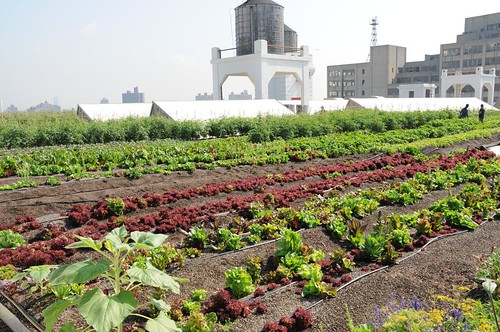FOR IMMEDIATE RELEASE 17-46 Green Project Funding Available for Non-Profits, Institutions and Other Private Property OwnersDEP Staff will be Available to Answer Questions During June 14th WorkshopGreen Infrastructure Improves the Health of Local Waterways and Helps to Clean the Air—Pictures of Completed Projects are Available on DEP’s Flickr PageThe New York City Department of Environmental Protection (DEP) encourages non-profits, institutions and other private property owners to apply for funding that is available for stormwater management projects through the Green Infrastructure Grant Program. DEP is engaged in a city-wide effort to soften the impervious urban landscape and help absorb stormwater that would otherwise drain into the combined sewer system and contribute to sewer overflows into local waterways. The Grant Program provides funding for stormwater management projects, also called green infrastructure, such as rain gardens, permeable pavements, and green roofs on private property in the combined sewer areas of the City. More information and the application can be found on the DEP website. “Building green infrastructure that will naturally collect stormwater is one of the most effective ways New Yorkers can help to improve our environment—and we’ll help pay for the work!” said DEP Acting Commissioner Vincent Sapienza. “Green infrastructure projects also help to clean the air, provide shade in summer, and make neighborhoods more beautiful.” Council Member Costa Constantinides, Chair of the Environmental Protection Committee, said, “Green infrastructure benefits our city’s environment by improving our air quality and protecting our greatest resource—our waterfront. The DEP Green Infrastructure Grant Program provides funding to non-profits and individuals for projects that absorb rainwater in order to reduce sewer overflows, including rain gardens, permeable pavements, and green roofs. I thank DEP for helping to spread awareness of this grant program and assisting with the application process at the upcoming workshop.” DEP will host a workshop on June 14 from 3:00 p.m. to 5:00 p.m. at Civic Hall, located at 118 West 22nd Street in Manhattan (12th Floor), to explain the eligibility requirements and the application process. Over the last several years, DEP has committed more than $15 million to fund 34 different projects with private property owners, who have contributed nearly $6 million in matching funds. All private property owners served by combined sewers in New York City are eligible to apply for a green infrastructure grant. Grant funding is provided for the design and construction of projects that reduce or manage 1.25 inches of stormwater that falls on selected properties. If selected, DEP will reimburse each grantee for the design and construction costs for the green infrastructure project. Preference will be given to projects that are located in priority watersheds, are cost-effective, provide matching funds or other contributions, and include ancillary environmental and community benefits such as public access, increased awareness about stormwater management, and green jobs development. DEP will also accept requests for pre-application meetings with developers, professional designers, project teams or other organizations representing constituencies in real estate, business groups, or other large groups. To arrange a meeting with DEP engineers to discuss proposal specifics in advance of submitting an application, email gigrantprogram@dep.nyc.gov. DEP hosts quarterly Green Infrastructure Grant Program workshops. To RSVP or to see dates and times of future workshops, visit DEP’s website. Other Grant program specifics include:
All successful grantees will continue to execute a funding agreement and declaration of restrictive covenant for each property. Notable projects that have completed construction include a 43,400 square foot green roof at the Brooklyn Navy Yard, one of the nation’s first blue/green roof combinations at The Osborne Association in the Bronx, a green roof at Lenox Hill Neighborhood House in Manhattan, permeable pavers and rain gardens at Queens College, a New York Restoration Project community garden in Brooklyn’s Gowanus neighborhood, a communal backyard garden project at the Kelly Street development in the Bronx, and a green roof at Bishop Loughlin Memorial High School in Brooklyn. DEP manages New York City’s water supply, providing approximately 1 billion gallons of high quality drinking water each day to more than 9 million residents, including 8.5 million in New York City. The water is delivered from a watershed that extends more than 125 miles from the city, comprising 19 reservoirs and three controlled lakes. Approximately 7,000 miles of water mains, tunnels and aqueducts bring water to homes and businesses throughout the five boroughs, and 7,500 miles of sewer lines and 96 pump stations take wastewater to 14 in-city treatment plants. DEP has nearly 6,000 employees, including almost 1,000 in the upstate watershed. In addition, DEP has a robust capital program, with a planned $20.7 billion in investments over the next 10 years that will create up to 3,000 construction-related jobs per year. For more information, visit nyc.gov/dep, like us on Facebook, or follow us on Twitter. | ||
